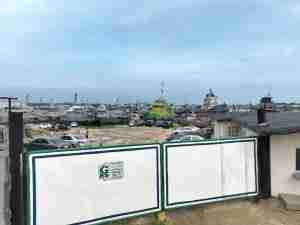New Hope Corp -- until now untouched by the flooding that affected the operations of more than 40 coal mines further north -- suspended all operations as the rains transformed southeastern districts into inland seas, shutting another 6 million tons of thermal coal capacity.
Asian buyers of Australian coal -- a mainstay of the national economy -- are increasingly turning to alternative suppliers as far away as the United States and South Africa, as forecasts show the rains are set to continue.
"People are turning their minds towards months rather than weeks for mine and operation repairs," UBS commodities analyst Tom Price said.
A South Korean utility had bought a cargo of South African coal to make up for lost Australian supplies, a source with knowledge of the deal said.
"We are still looking for March-loading supplies. We think it's better to play it safe since we don't know how long the disruption in Australia would last and there's a chance that Indonesia could also be affected once the wet season comes," said a source from one of the country's utilities.
Queensland's coal outages represent about 41 percent of the world's metallurgical coal exports and 8 percent of the world's thermal coal exports, according to Australia & New Zealand Bank.
Three quarters of the state has been declared an emergency zone because of the floods, which have killed 13 people and caused widespread evacuations, according to police.
Coal Price Squeeze
Global metallurgical coal prices could soon exceed the record highs of 2008, when heavy flooding last hit Australian collieries, Moody's said in a special report.
Thermal prices were also set to climb, Moody's said.
Direct losses from the rains that started in November and have left much of the eastern state of Queensland underwater, are estimated by Moody's at around $2 billion so far, but will most likely climb higher once the full impact of the devastation is assessed.
Wesfarmers Managing Director Stewart Butel said the flooding continued to significantly impact metallurgical coal production at its Curragh mine and that rail operations were unlikely to resume before mid-January 2011 at the earliest.
A Dec. 10 force majeure remains in place for export and domestic contracts.
Another mine, owned by Peabody was also cut off after QR National shut another railway line .
In central Queensland, where coal mining has been start-stop for weeks, some coal exports were still being shipped out of Dalrymple Bay Coal Terminal and Gladstone Port, but concerns were mounting that supplies would run out unless mines restart soon.
"We're fully dependent on how much the mines can provide. If their production and stockpiles are getting low, then obviously that will trickle through to us," said Jesse Knight, operations analyst at Dalrymple Bay Coal Terminal.
Dalrymple held enough coal to only load four of 39 vessels waiting off the port.
Gladstone Port said it had not received coal for export since last week and was loading some coal for export from stockpiles of around 500,000 tons. The port normally holds 6 million tons in stock.
A South Korean buyer has booked a cape-sized February-loading thermal coal shipment from South Africa between $138 and $140 a tonne CFR (cost-and-freight) late last week, a source with knowledge of the deal said.
The price was based on coal with a heating value of 6,080 kcal/kg (NAR), said the source, who requested anonymity as the deal was commercially sensitive.
Trade sources said a South Korean utility had also recently booked a cape-sized shipment from Canada.
The South Korean government recently held a meeting with executives from the country's five state-run utilities to discuss the impact of Australia's floods on supplies. (Reuters)









